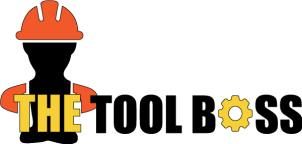The difference between thread chasers and a cutter tap is subtle but important.
In general, if you have a threaded hole that needs to be cleaned up, then a chaser tap would be your choice. If you need to make new threads, then a cutter tap is what you should use. So, there is really no argument about thread chaser vs tap.
Or is there?
Thread chasers can be used on both internal and external threads. In the case of female threads, or threaded holes, it is called a chaser tap.
In the case of a male thread, or outer threads it is called a thread chaser die.
Thread Chasers For Damaged Threads
A thread chaser tool should be used for repairing or reconditioning either damaged threads or threads that are very dirty or corroded.
Many things can interfere with threads, spark plugs, for instance, are often in hard to reach places deep in the cylinder head, and sometimes the new plug may be started off at slightly the wrong angle, and cause slight damage to the start of the internal thread.
In this case, you can use the thread chaser to clean off and reform any damage to the internal thread in the cylinder head.
Also, in applications where there is extreme heat, or combustion takes place, there can be a hard residue that builds up on the thread over time. This can lead to the threads becoming blocked with hard baked on material.
The thread chaser can be used to get rid of this old hard substance, and restore the thread to a working condition.
Cleaning Rusty Threads
Cleaning threads that are contaminated with rust and various other debris is a very common use case for thread chasers. The danger of using a tap in this case is that it is possible to remove too much parent metal from the already cut threads.
What Does a Thread Chaser Do?
Thread chasers allow removal of rust from threaded holes and clean up threads to allow inserting bolts into bolt holes.
Can You Use a Tap as a Thread Chaser?
You can use a thread cutting tap for chasing threads, but there is a danger of removing too much of the existing thread if you don’t get the tap straight to begin with.
What Tool Is Used for Cleaning Threads?
For cleaning an external thread, you would use a thread chaser die, and for cleaning an internal thread, you would use a thread chaser tap.
How Do You Clean Up Damaged Threads?
A thread chasing die should be used on a male thread, and a thread chaser tap or thread restorer file should be used on a female thread.
Some people say that thread chasers should be used before inserting screws or bolts into a damaged thread, although when using structural screws or lag bolts, the use of thread chasers isn’t required.
How Much Do Thread Chasers Cost?
They vary in price according to size. A small one can cost a few bucks, whereas a full set of large chasing taps and dies can cost several thousand dollars.
Are Spiral Point Taps Used For Cutting New Threads?
Yes, these tools are considered a budget option for power tapping with specialized machinery.
They are used for cutting threads with tapping machines. There are numerous considerations when it comes to creating threads with taps, especially when using a threading machine.
What if the Thread Is Badly Damaged?
If you have a badly damaged or stripped screw thread, which is beyond the chance of repair using thread chasers, then there are a few options open, depending upon the size of the damaged thread.
One option is the use thread repair inserts. This entails drilling out the old thread to a larger diameter, then inserting a thread insert. They are purchased in the sizes required, and are made from a round piece of wire that is shaped and twisted to form a new thread.
A good tap and die set and thread chasers should be in all good engineering tool kits. This will enable you to be able to cut threads, clean threads in threaded holes and bolts. Oh, and take care to make sure the bolt is started in the thread correctly before pulling the trigger on that impact wrench!
Don’t Believe What Everybody Tells You!
There is a school of thought that says that thread chasers are just another way of selling you another tool, and that the use of a tap will actually do the very same job.
I think I’m in this corner. I’ve only ever cleaned female threads using taps, (albeit very cautiously), but I have used a thread chaser, or restorer file on male threads, and that does seem to work very well, it’s also easier to use than a die.
So, when it comes to thread chaser vs tap, you pays your money, and you takes your chance!
Good luck.
Resources;
http://web.mit.edu/course/other/machineshop/Drilling/threading.html
